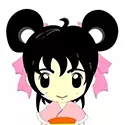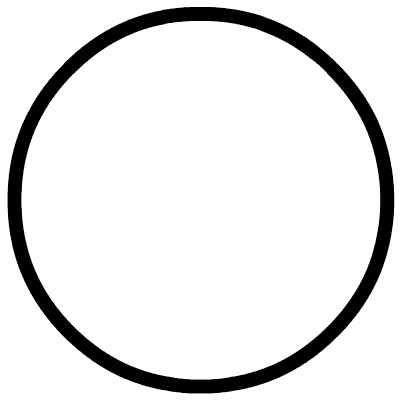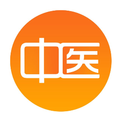
Editor: Xiao Yao Tong
Author Xiong Zhi Cheng is a fourth-generation disciple of Master Xiao Xiang Ru, and this article was written at the conclusion of the Jin Kui Yao Lue module study. Through this article, Brother Xiong objectively records his insights and understanding during the study phase of 《金匮要略》 (Jin Kui Yao Lue), comparing and summarizing the connections and differences between 《金匮》 (Jin Kui) and 《伤寒》 (Shang Han), which helps everyone to enter the study of 《金匮》 with a clearer perspective, thus sharing with readers.
▍Total of3866words, estimated reading time10minutes
《金匮要略》 (Jin Kui Yao Lue) is one of the most important classics in Traditional Chinese Medicine (TCM), being the miscellaneous diseases section of Zhang Zhong Jing’s 《伤寒杂病论》 (Shang Han Za Bing Lun). Therefore, whether engaged in theoretical research or clinical practice, it can be said that anyone who achieves certain results has studied 《金匮要略》. I have also studied 《金匮要略》 multiple times in different forms with different teachers, but I have always found its content vast and difficult to master, feeling somewhat daunted. Since the beginning of this year’s 《金匮要略》 course, especially knowing that it is personally taught by Master Xiao Xiang Ru, I have been filled with anticipation. After nearly half a year of study, I have gained a lot. Due to the richness of the entire learning content, here I will briefly summarize some of the insights I have gained:
1. Truly Understanding the Connections and Differences Between 《金匮》 and 《伤寒》
Classics
Compared to the previous three generations of disciples, we are very fortunate that both 《伤寒论》 (Shang Han Lun) and 《金匮要略》 (Jin Kui Yao Lue) are taught by the Master himself. In past studies, many learners, although aware that 《伤寒论》 and 《金匮要略》 are originally one book, still feel that 《金匮要略》 is not as clear and practical as 《伤寒论》 in terms of learning, understanding, and application. As a seasoned TCM scholar, the Master revealed the mysteries behind this. In the Master’s view, the differences between the two originally unified texts arise from multiple reasons, mainly:
First, the different individuals and times involved in the compilation and transmission of the two texts. Since the original text has been lost, the earlier part of the Shang Han section was compiled into a book by Wang Shu He, the Grand Physician of the Jin Dynasty, titled 《伤寒论》.This part of the content is closer to the original work of Zhang Zhong Jing. In other words, Wang Shu He collected the Shang Han section of 《伤寒杂病论》 (Shang Han Za Bing Lun) but did not see the miscellaneous diseases section. It was not until the Northern Song Dynasty during the reign of Emperor Renzong that Wang Zhu, a Hanlin scholar, discovered a condensed version of 《伤寒杂病论》 titled 《金匮玉函要略方》 (Jin Kui Yu Han Yao Lue Fang) in the remnants of the imperial library, which consisted of three volumes: the first volume discussing Shang Han, the second volume discussing miscellaneous diseases, and the third volume containing prescriptions and treatments for gynecological diseases. By the time of Emperor Shenzong’s Xining era (1068), Lin Yi and others revised it, removing the first volume and retaining the second and third volumes. For clinical convenience, the prescriptions from the third volume were categorized under various syndromes, still compiled into three volumes, forming what we now see as 《金匮要略》. Therefore, it is difficult to say that the 《金匮要略》 we see today is the original form of Zhang Zhong Jing’s miscellaneous diseases section.
Second, the differences in the research subjects of the two texts, namely the differences between Shang Han and miscellaneous diseases, which correspond to external pathogenic diseases and internal injuries, acute diseases and chronic diseases.External pathogenic diseases have a short course, generally with intact vital qi, primarily characterized by excess pathogenic factors, making the condition simple and easy to identify. As long as the pathogenic factors are expelled, the disease will resolve, making treatment straightforward and effective. In contrast, internal injury miscellaneous diseases have a long course, often involving both excess pathogenic factors and deficiency of vital qi, leading to complex conditions with many threads, making diagnosis difficult. Treatment cannot be simplified and must consider all aspects; even if the diagnosis is accurate and treatment correct, the efficacy may not be immediate, as the recovery of vital qi requires time, and the processes of tonifying and expelling pathogenic factors can influence each other.
Third, the differences in the stylistic format of the compiled 《伤寒论》 and 《金匮要略》.For example:(12) Tai Yang Zhong Feng, Yang is floating and Yin is weak. Yang floating indicates heat is self-releasing; Yin weak indicates sweating is spontaneous. If there is aversion to cold, aversion to wind, fever, nasal congestion, and dry vomiting, 桂枝汤 (Gui Zhi Tang) is the main prescription.(35) Tai Yang disease, headache, fever, body aches, lower back pain, joint pain, aversion to wind without sweating and wheezing, 麻黄汤 (Ma Huang Tang) is the main prescription.The above two lines are from 《伤寒论》, and following these lines will certainly yield positive results. Most of the lines in 《伤寒论》 that state the main prescription have confirmed efficacy. This means that 《伤寒论》 has a high degree of certainty, and only with certainty can there be guaranteed efficacy.
In contrast, the lines in 《金匮要略》:For deficiency and vexation leading to insomnia, 酸枣仁汤 (Suan Zao Ren Tang) is the main prescription.(Chapter 17 on Blood Bi and Deficiency). For difficulty in urination, 蒲灰散 (Pu Hui San) is the main prescription, along with 滑石白鱼散 (Hua Shi Bai Yu San) and 茯苓戎盐汤 (Fu Ling Rong Yan Tang).(Chapter 11 on Diabetes and Difficulty in Urination) The above two lines from 《金匮要略》 may not necessarily be effective when applied directly. For deficiency and vexation leading to insomnia, 酸枣仁汤 may not be effective. Why? Because deficiency and vexation leading to insomnia can have multiple patterns, meaning that 酸枣仁汤 addresses only one of many patterns and cannot cure all cases of deficiency and vexation leading to insomnia. Moreover, the specific patterns that 酸枣仁汤 can treat are not clearly stated by Zhong Jing in the text. For difficulty in urination, 蒲灰散 may not be effective in most cases. This is because there are many causes of difficulty in urination, and merely having difficulty in urination does not determine the treatment plan, so using these formulas is often ineffective.
Due to the above differences, the Master has also proposed corresponding requirements for mastering 《金匮要略》.
2. Methods for Studying 《金匮要略》
Classics
In terms of study methods, the Master proposed five requirements:
1. We are similarly required to study the original text and memorize it, especially the key passages that must be well-remembered.
2. We should read the original text while studying the textbook, paying special attention to the issues pointed out by the Master during lectures regarding the original text. The Master emphasized that this is a particularly important aspect in the study of 《伤寒论》.
3. When studying 《金匮要略》, we must have the concept of “disease,” that is, the concept of miscellaneous diseases, and learn in conjunction with current clinical knowledge from various disciplines, including Western medicine.
4. Like the study of 《伤寒论》, we should focus on formulas and patterns, emphasizing those formulas and patterns in 《金匮要略》 that have confirmed efficacy. For those patterns labeled as “main prescription” or with clinically confirmed efficacy, although they cannot be simply compared to the “main prescription” in 《伤寒论》, they should be given special attention. This requirement is consistent with the Master’s advocacy of the “specificity of formulas and patterns” concept, which I believe is one of the characteristics of Master Xiao’s school.
5. We should maintain a spirit of inquiry, focusing on understanding the essence and not forcing interpretations. The Master believes that during the formation of 《金匮要略》, there inevitably will be omissions or disconnections, or places added by later individuals. Therefore, many times we cannot force interpretations that do not conform to the “three principles” (namely, medical principles, literary principles, and common sense). This is also the scientific spirit of seeking truth from facts that the Master repeatedly advocates. In the course, the Master provided many examples to illustrate this. For instance, in Chapter 13 of 《脏腑经络病篇》 (Zang Fu Jing Luo Bing Pian), it states:“Wind invades in the morning, cold invades in the evening.”This cannot be interpreted as wind only attacking the body in the morning and cold only in the afternoon, as this is clearly neither common sense nor medical principle. Another example is in Chapter 5 of 《血痹虚劳篇》 (Xue Bi Xu Lao Pian), which states:“Men’s pulse is weak, sinking, and wiry….”Can such a pulse be clinically observed? A weak pulse indicates no strength, and a sinking pulse can only be felt with heavy pressure, while a wiry pulse is tense; such descriptions do not conform to medical principles or common sense.
Clearly, the study methods emphasized by the Master are actually conveying a methodological thought to us, the significance of which can guide not only the study of 《金匮要略》 but also all classical studies. With such a study method, we gain a higher perspective, and many previously difficult-to-understand concepts can be viewed from new angles. This is also one of my main gains from studying 《金匮要略》 in the Master’s school.
3. Using Phlegm, Fluid, and Dampness Diseases as an Example
Classics
《金匮要略》 contains a wealth of prescriptions and patterns, making it difficult to list them all; here I will mainly discuss two aspects:1. The treatment of water, dampness, and phlegm.The human internal environment cannot be separated from water, and 70% of the human body is composed of water. The water that can be normally utilized by the body is called “Jin Ye” (津液), while the water that cannot be utilized is termed “Fei Shui” (废水), leading to the formation of “Phlegm, Fluid, and Dampness.” As a pathological product, phlegm, fluid, and dampness are common and significant pathogenic factors in clinical practice. The chapters in 《金匮要略》 that involve phlegm, fluid, and dampness include: 《痉湿暍病脉证并治第二》 (Jing Shi He Bing Mai Zheng Bing Zhi Di Er), 《痰饮咳嗽病脉证并治第十二》 (Tan Yin Ke Sou Bing Mai Zheng Bing Zhi Di Shi Er), 《消渴小便不利淋病脉证并治第十三》 (Xiao Ke Xiao Bian Bu Li Lin Bing Mai Zheng Bing Zhi Di Shi San), 《水气病脉证并治第十四》 (Shui Qi Bing Mai Zheng Bing Zhi Di Shi Si), 《黄疸病脉证并治第十五》 (Huang Dan Bing Mai Zheng Bing Zhi Di Shi Wu), and 《呕吐哕下利病脉证并治第十七》 (Ou Tu He Xia Li Bing Mai Zheng Bing Zhi Di Shi Qi). The diseases related to phlegm and fluid include phlegm, suspended fluid, overflow fluid, and branch fluid. Water qi diseases include wind water, skin water, stone water, and yellow sweat, with numerous prescriptions such as 苓桂剂 (Ling Gui Ji), 五苓散 (Wu Ling San), and 小青龙汤 (Xiao Qing Long Tang). It can be said that the discussions on phlegm, fluid, and dampness in 《金匮要略》 greatly enrich the related content in 《伤寒论》, laying a solid foundation for the treatment of such diseases and the theoretical development of later generations of physicians.Repeatedly and diligently mastering these contents is of great importance for improving one’s theoretical level in TCM and clinical abilities.
2. Discussing a Specific Formula— The Learning Experience of 小青龙汤 (Xiao Qing Long Tang).In 《金匮要略》, 小青龙汤 appears three times:— For overflow fluid, induce sweating; 大青龙汤 (Da Qing Long Tang) is the main prescription.— For cough with inability to lie down, 小青龙汤 is the main prescription.— For women vomiting saliva, if the doctor purges, the heart will feel distended; first treat the vomiting of saliva, 小青龙汤 is the main prescription. Once the saliva stops, then treat the distension, 泻心汤 (Xie Xin Tang) is the main prescription.To deeply understand the lines regarding 小青龙汤 in 《金匮要略》, one must combine them with the relevant lines in 《伤寒论》.Line 40: In Shang Han, if the exterior does not resolve, and there is water qi in the heart, with dry vomiting, fever, and cough, or thirst, or diarrhea, or choking, or difficulty in urination, with fullness in the lower abdomen, or wheezing, 小青龙汤 is the main prescription.Line 41: In Shang Han, if there is water qi in the heart, cough with slight wheezing, fever without thirst, and if after taking the decoction one feels thirsty, this indicates that the cold is leaving and the resolution is desired; 小青龙汤 is the main prescription.In 《伤寒论》, it is clearly stated that the pathogenesis of 小青龙汤 is external cold with internal fluid, and its probable patterns are closely related to the circulation of water and dampness within the body. The treatment follows Zhang Zhong Jing’s principle that “for phlegm and fluid diseases, one should use warming herbs to harmonize,” dispersing exterior cold and expelling internal fluids, and provides corresponding herbal combinations.In 《金匮要略》, the term “overflow fluid” refers to fluid flowing to the extremities, which should be treated by inducing sweating, whether or not sweating occurs, causing body pain. Since the fluid is at the surface (extremities) and should be expelled through sweating, the treatment method remains to induce sweating. Secondly, if there is an external pathogen with internal fluid, and the exterior does not resolve, the lung governs the skin and hair, which can lead to cough and wheezing, with water fluid obstructing the heart, causing the patient to be unable to lie down, often accompanied by lower limb edema, similar to overflow fluid; the treatment method can still be to induce sweating. Thirdly, if a woman vomits saliva, it only indicates internal fluid; the fluid can only be warmed and transformed, and whether or not there is an exterior syndrome, 小青龙汤 can be used for treatment.小青龙汤 is a typical representative of simultaneous resolution of both exterior and interior; when external pathogens and internal fluids interact, if the exterior does not resolve, the qi mechanism is obstructed, and internal fluids hinder the smooth flow of qi, it is necessary to resolve both the exterior and transform the fluids simultaneously. Through the line “In Shang Han, if the exterior does not resolve, and there is water qi in the heart,” we clearly see that 小青龙汤 addresses both exterior cold of Tai Yang disease and the internal fluid of Tai Yin disease, requiring simultaneous treatment. Through the study of 小青龙汤, we can also deepen our understanding of the newly introduced 射干麻黄汤 (She Gan Ma Huang Tang) and 厚朴麻黄汤 (Hou Po Ma Huang Tang) in 《金匮要略》, as they share similar pathogenesis, all falling within the realm of phlegm, fluid, and dampness. 小青龙汤 has extensive clinical applications, as evidenced by numerous cases from the Master and many renowned practitioners, so I will not list specific cases here.These are my insights and experiences from studying 《金匮要略》 in the Master’s school. It should be said that the study of classics has no endpoint, only new starting points. Although I have diligently completed a study of 《金匮要略》 with the Master, many contents still require repeated study and application in clinical practice to enhance my understanding, allowing the knowledge from the texts to become part of my own knowledge; only in this way can I become a qualified disciple of the Master’s school.
— THE END —
▍Copyright Statement:
▶Article Author:Xiong Zhi Cheng.Image Source:Public Image Library.
▶The formulas mentioned in this article should be used under the guidance of a qualified TCM practitioner; do not self-medicate.
 Click to read the original text for details on internal disciple recruitment.
Click to read the original text for details on internal disciple recruitment.


